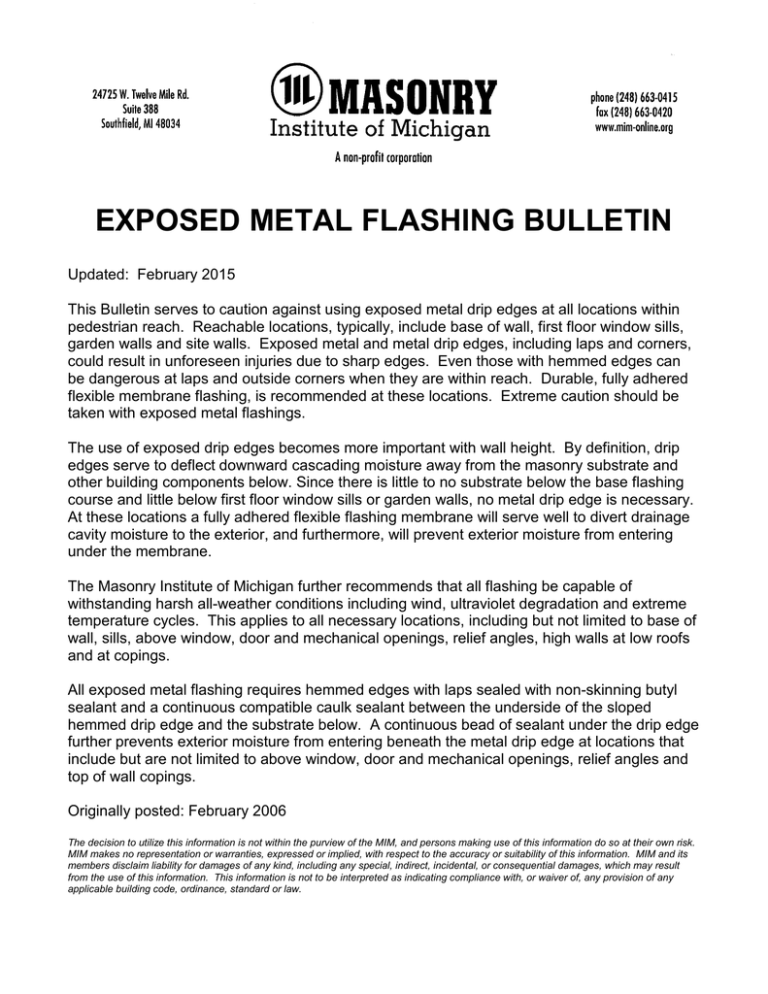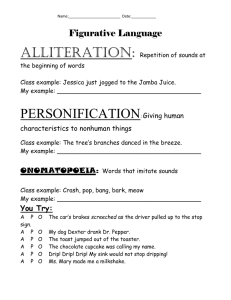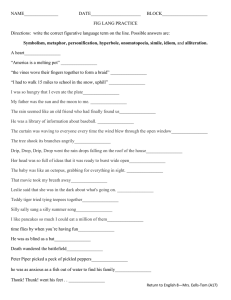Exposed Metal Flashing Bulletin (Updated 2015)
advertisement

EXPOSED METAL FLASHING BULLETIN Updated: February 2015 This Bulletin serves to caution against using exposed metal drip edges at all locations within pedestrian reach. Reachable locations, typically, include base of wall, first floor window sills, garden walls and site walls. Exposed metal and metal drip edges, including laps and corners, could result in unforeseen injuries due to sharp edges. Even those with hemmed edges can be dangerous at laps and outside corners when they are within reach. Durable, fully adhered flexible membrane flashing, is recommended at these locations. Extreme caution should be taken with exposed metal flashings. The use of exposed drip edges becomes more important with wall height. By definition, drip edges serve to deflect downward cascading moisture away from the masonry substrate and other building components below. Since there is little to no substrate below the base flashing course and little below first floor window sills or garden walls, no metal drip edge is necessary. At these locations a fully adhered flexible flashing membrane will serve well to divert drainage cavity moisture to the exterior, and furthermore, will prevent exterior moisture from entering under the membrane. The Masonry Institute of Michigan further recommends that all flashing be capable of withstanding harsh all-weather conditions including wind, ultraviolet degradation and extreme temperature cycles. This applies to all necessary locations, including but not limited to base of wall, sills, above window, door and mechanical openings, relief angles, high walls at low roofs and at copings. All exposed metal flashing requires hemmed edges with laps sealed with non-skinning butyl sealant and a continuous compatible caulk sealant between the underside of the sloped hemmed drip edge and the substrate below. A continuous bead of sealant under the drip edge further prevents exterior moisture from entering beneath the metal drip edge at locations that include but are not limited to above window, door and mechanical openings, relief angles and top of wall copings. Originally posted: February 2006 The decision to utilize this information is not within the purview of the MIM, and persons making use of this information do so at their own risk. MIM makes no representation or warranties, expressed or implied, with respect to the accuracy or suitability of this information. MIM and its members disclaim liability for damages of any kind, including any special, indirect, incidental, or consequential damages, which may result from the use of this information. This information is not to be interpreted as indicating compliance with, or waiver of, any provision of any applicable building code, ordinance, standard or law.




